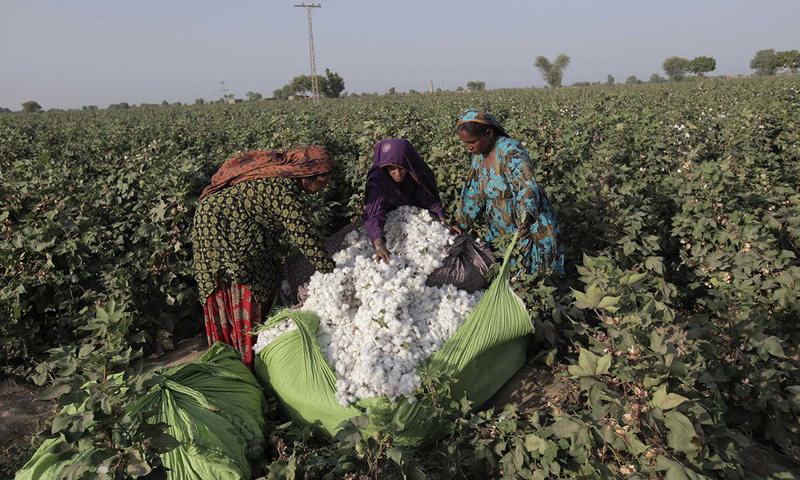ISLAMABAD:
The government has decided to offer incentives to the farmers to enable them to switch over from the water-intensive sugarcane crop to cotton production in a bid to rely less on cotton imports and enhance textile exports amid a rapidly widening trade deficit. A plan in that regard was tabled before Prime Minister Shehbaz Sharif for review in a cabinet meeting held recently.
Secretary of the Commerce Division gave a presentation to the cabinet on the subject of “Export performance, imports situation and trade balance”. During discussion, the cabinet members observed that agricultural commodities, in which Pakistan was selfsufficient in the past, were now being imported to meet consumption requirements. During the previous government’s tenure, Pakistan also became a net importer of wheat, they noted.
Apart from wheat, Pakistan has been relying on cotton imports for the past many years because of a significant decline in its harvest. One of the reasons is a sharp increase in the input cost of farming, which has led to the shrinking of area sown with cotton crop. Farmers have also switched over to sugarcane cultivation where they are fetching better prices.
Another factor is the subsidy doled out by the government to the fertiliser and textile manufacturers excluding the farming community, which has discouraged them from opting for cotton cultivation. Though the government is giving subsidy on gas supply to the industry, the farmers have been forced to pay higher prices for urea and di-ammonium phosphate (DAP).
DAP price has crossed Rs10,000 per bag – an alltime high in the history of Pakistan. In the meeting, the cabinet members underlined the need for encouraging the farmers to plant cotton as its harvest had been on the wane in the absence of a zoning system as well as due to the lack of incentives, especially an attractive indicative price.
Over the years, the farmers have become more inclined towards sowing sugarcane crop, but it is more waterintensive and its plantation is not sustainable for a waterscarce country like Pakistan. Under the proposed incentive package, the increase in area under cotton cultivation will not only lead to a reduction in imports but will also help enhance Pakistan’s textile exports. Furthermore, the shift from sugarcane to cotton will allow the farmers to take the benefit of planting wheat in the remaining season, which will push up the staple commodity’s output.
Cabinet members suggested that a committee should be constituted to firm up recommendations for the incentive package. The cabinet took note of the presentation given by the Commerce Division secretary and formed a committee. The new body was tasked with recommending short and medium-term measures to provide incentives for the farmers in order to help them switch over from the sugarcane crop to cotton plantation. The objective of the move is to slash cotton imports, deal with water scarcity and ramp up textile exports.
The committee will also study the sowing area, taking into account the cropping patterns/ zoning, price signals/ indicative price policy and linkage between the agricultural policy, industrial policy and export promotion policy. Minister for national food security and research will be convenor of the committee while its members will comprise minister for commerce, minister for industries and production, national food security secretary, Commerce Division secretary and Industries and Production Division secretary.
The committee will submit its recommendations to the cabinet. The National Food Security and Research Division will notify the committee and provide secretarial support. The commerce secretary, in his presentation, highlighted the country’s export and import trends as well as the factors that contributed to the growth in exports. The factors included business facilitation, realistic exchange rate for supporting exports, tariff rationalisation and regionally competitive energy tariffs.
Early opening of the economy after Covid-related lockdowns and continuation of operations of exporting industries during various Covid restrictions also contributed to the increase in exports. Some other factors like market access initiatives, liquidity support and cash flow improvement also played their role in supporting the exports.
Under the State Bank of Pakistan’s cheap financing schemes for the exporters and industries, banks disbursed Rs1,170 billion (Export Finance Scheme – Rs992 billion, Long Term Financing Facility – Rs55 billion and Temporary Economic Refinancing Facility – Rs123 billion) in 2021. On the other hand, customs duty drawback was calculated at Rs32 billion in 2019-20 and Rs23 billion in 2020-21.
Πηγή: tribune.com.pk

